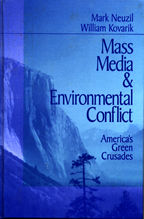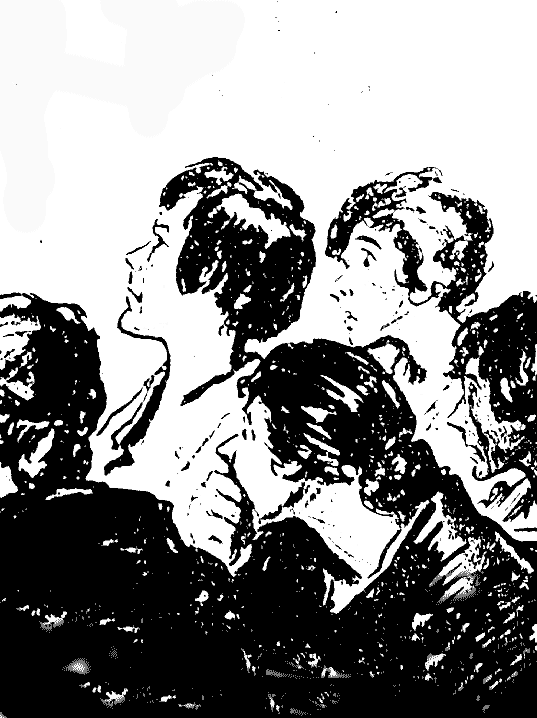 (Reposting a 2o12 article following events in Paris, Jan. 7, 2015).
(Reposting a 2o12 article following events in Paris, Jan. 7, 2015).
Austrian psychology professor Konrad Lorenz used to tell a story about his dog. On their regular walks, his dog would always run along a neighborhood wall and bark at another dog that was on the inside of the wall.
The two dogs continued this behavior for years, barking and snarling at each other every day, until — one day — an accident took out part of the wall. That day, the two dogs raced along the wall as usual but then came to the broken spot. And the two dogs faced each other for the first time. After a moment of confusion, they quickly returned to their respective sides of the wall and started barking across the wall again.
So the lesson, Lorenz said in his 1955 book Man Meets Dog, is that this ability to moderate aggression is a survival skill that animals seem to have. Could we learn something from their example that applies to our communication problems today?
Clearly, the walls are down. For the first time, the world’s cultures are facing each other through satellite and web transmissions without any time or space in between. That’s been a blessing in many ways but — it now seems — also quite a curse. Points of friction are erupting into mob violence with stunning frequency.
The killing of the US Ambassador to Libya on Sept. 11, 2012 in apparent retaliation for a bizarre anti-Islamic movie entitled “The Innocence of Muslims” by someone apparently named Sam Becile is only the latest example. A good run-down of the current crisis is found in a Nation article by Robert Dreyfuss. Other incidents include the reaction to Salmon Rushdie’s novel in 1988, the Danish cartoons of 2005 and the threats of a crackpot Florida pastor to burn Korans in 2010.
Is the answer, as an editorial in the Denver Post says, for Muslims to simply accept provocative speech from Americans like Sam Becile?
Provocative speech is not an abuse of free speech. It is precisely the speech the First Amendment exists to protect.
There are two classes of problems in play here. One has to do with the latitude of free speech protections in the US. The other has to do with a lack of American understanding about international law.
Is there a US balance?
For all the recent political posturing about freedom of speech for ultra-right wing viewpoints in the US, you have to wonder if there is any comparable concern for fundamentalist Muslim viewpoints expressed by US citizens in the US. For example, according to this article in Salon magazine, a Virginia man named Jubair Ahmad is facing criminal charges of aiding a terrorist group for making a video that cheers attacks on American troops.
Its not quite the same as the “Innocence” video, but the Ahmad video is after all just speech, and not action. Both fall into the category of unethical hate speech. Cheering attacks on US troops with a video may be vile and repulsive, but should it be illegal? Supporting blasphemy by insulting a major world religion in the worst possible way may be vile and repulsive, but should IT be illegal?
The US standard for highly offensive “fighting words” speech is to ask whether they are likely to cause “imminent action.” This standard has been effective since the Brandenburg v Ohio decision of 1969, and RAV v St Paul in 1992, and it has been invoked (for example) in a 2002 decision taking down a web site “hit list” of addresses and location of abortion clinics posted by an anti-abortion group in Oregon.
But that’s imminent action according to US cultural standards. What happens if the “action” is imminent in another country, but not in the US? How do we handle the globalization of communication in a world of Balkanized communication laws? Is there any hope for an international law that would deal with hate speech?
International law
The basis of international law in the area of freedom of speech involves two parts of the Universal Declaration of Human Rights:
Article 7 — All are equal before the law and are entitled without any discrimination to equal protection of the law. All are entitled to equal protection against any discrimination in violation of this Declaration and against any incitement to such discrimination.
Article 19 — Everyone has the right to freedom of opinion and expression; this right includes freedom to hold opinions without interference and to seek, receive and impart information and ideas through any media and regardless of frontiers.
Most of the conflict between Article 7 and Article 19 has involved racial hatred rather than religious intolerance.
As Toby Mendel said in a 2010 paper on Hate Speech Rules under International Law:
There have been numerous academic attempts to distinguish hate speech from merely offensive speech. One line of reasoning, which is helpful at least conceptually, is to distinguish between expression targeting ideas, including offensive expression, which is protected, and abusive expression which targets human beings, which may not be protected. In … [one European case] the European Court of Human Rights seemed to support this approach, holding that the impugned speech was not a gratuitous attack on religion but, rather, part of a clash of ideas (‘débat d’idées’).
So if offensive expression is supposed to be protected under international law, but hate speech is not, where do we place the Becile video?
The value of criticizing other religions and beliefs is one that has long been held as a fundamental freedom in the West. After all, Victor Hugo depicted the Catholic Church in the worst possible light in the Hunchback of Notre Dame in 1831. So did Martin Luther in his 98 Theses in 1518. We have a long tradition of religious criticism, and it’s understood that the West is not about to change that and go back 500 years to the age of horrifying religious war.
And yet most Muslims, while deploring the violence, have seen the Becile video as incitements to hatred against their religion. Westerners might shrug such a thing off, but they must respect the apparent fact that it’s not so easy for Muslims to do that. Sneering, vicious jabs at any religion are contemptible in the West, too, even if, in the Western tradition, they no cause for violence or censorship.
Clearly, this needs a lot more discussion between nations and people of good will. Perhaps there are methods where “time, place and manner” restrictions on hate speech might be enabled. For example, on Sept. 13, Google blocked YouTube users in Libya and Egypt from accessing the Becile video. Did that violate Becile’s rights in the US? Of course not.
Perhaps we need to revisit the recommendations of the UNESCO commission led by Sean MacBride in 1980, which attempted to address the deeper implications of the rapidly growing global network of communications.
Noting the rapid advance of communication as well as the disparities of economic power, the commission said: “Whether the resources of communication will indeed be mobilized for human benefit depends on decisions now due to be taken… Each society will have to make its own choices and find ways of overcoming the material, social and political constraints that impede progress.”
So, to a large extent, the question of whether people in the Middle East should be exposed to anti-Islamic messages created in the West can, and should, rest on the choices their societies make.
Meanwhile, instead of insisting on an international right of American free speech that applies only to Americans, we need to approach the problem of broken international communication barriers with more maturity. Article 7 and Article 19 — not the US First Amendment — is what the rest of the world is talking about.
* Also see: On the Web, a fine line (New York Times Sept. 16, 2012)
* America’s war on blasphemy (Philadelphia Inquirer, Oct 2 2012)

 Revolutions in Communication
Revolutions in Communication Mass Media & Environmental Conflict
Mass Media & Environmental Conflict